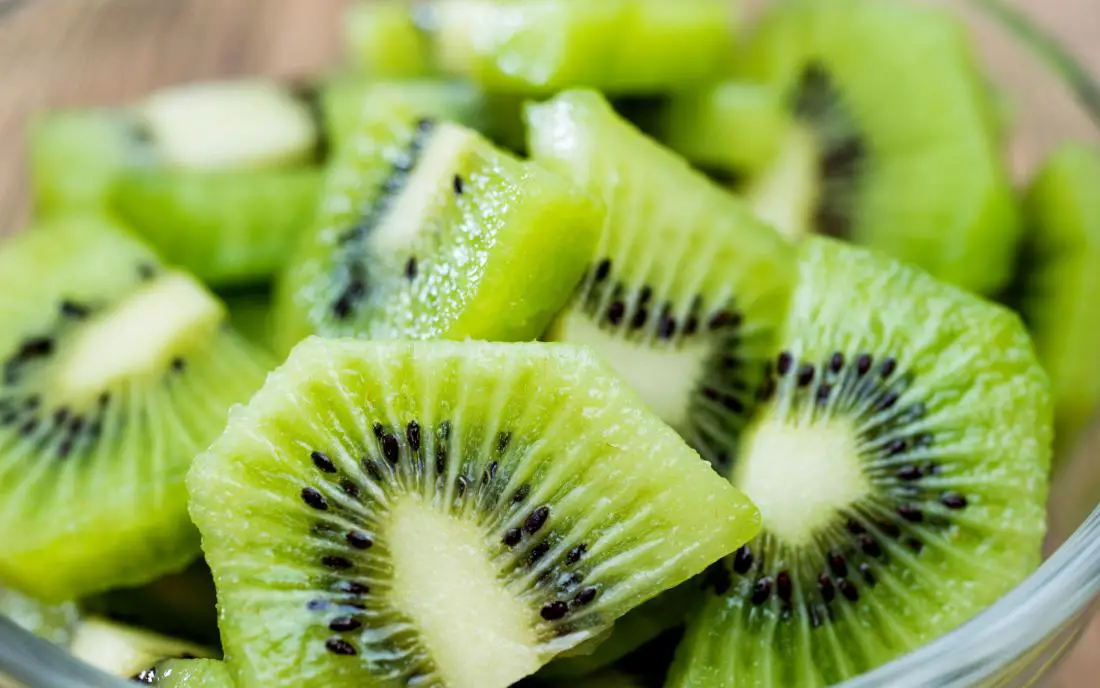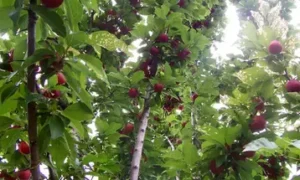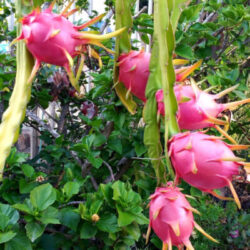
Introduction to Kiwi Seasonality
Kiwi seasonality refers to the specific time period during which kiwi fruits are at their peak in terms of flavor, quality, and availability. Kiwis are unique fruits that have their own distinct growing seasons and harvesting periods, which vary based on various factors such as geographic location, climate, and the specific variety of kiwi.
Understanding kiwi seasonality is important for both consumers and growers. For consumers, knowing when kiwis are in season helps in making informed decisions about purchasing fresh, locally sourced kiwis that are at their best in terms of taste and nutritional value. It also allows them to plan recipes and incorporate kiwis into their diet when they are most readily available.
For growers, understanding kiwi seasonality is crucial for cultivation planning and harvest management. They need to know the optimal time to plant and care for kiwi vines, as well as when to expect the fruits to ripen and be ready for harvest. This knowledge helps them maximize the yield and quality of their kiwi crops.
Kiwi seasonality can vary depending on the specific variety of kiwi. The two most common types of kiwi are the fuzzy kiwi (Actinidia deliciosa) and the golden kiwi (Actinidia chinensis). While fuzzy kiwis are more widely known, golden kiwis have gained popularity in recent years due to their sweeter flavor and smooth, hairless skin.
Additionally, the seasonal availability of kiwis can also vary by region. Kiwis thrive in temperate climates, and countries like New Zealand, Italy, and California are major producers. Thus, the seasonality of kiwis in these regions may differ from other parts of the world.
Factors such as temperature, sunlight, rainfall, and soil conditions play a crucial role in determining kiwi seasonality. Kiwi vines require a specific combination of these factors to grow and bear fruit optimally. As a result, the timing of kiwi season may be influenced by local climate patterns and variations from year to year.
When Are Kiwis Season?
Kiwi Varieties and Their Seasonal Availability
Kiwi Varieties and Their Seasonal Availability
Kiwi fruits come in various varieties, each with its own unique characteristics, flavors, and seasonal availability. Here are some common kiwi varieties and a general overview of their seasonal availability:
- Fuzzy Kiwi (Actinidia deliciosa):
- Hayward: The Hayward kiwi is the most popular and widely recognized variety. It has a brown, fuzzy exterior and vibrant green flesh. Hayward kiwis are typically available from late fall to early spring, with peak seasonality occurring during the winter months.
- Golden Kiwi (Actinidia chinensis):
- Sungold: Also known as Zespri Gold, Sungold kiwis have a smooth, golden skin and a sweeter, tropical flavor compared to fuzzy kiwis. They are available from late spring to early fall, with peak seasonality in summer.
- Kiwi Berry (Actinidia arguta):
- Hardy Kiwi: Kiwi berries, also known as baby kiwis or hardy kiwis, are smaller in size and have a smooth, edible skin. They come in various colors, including green and red. Hardy kiwis are typically available in late summer to early fall.
- Kiwi Fruit (Actinidia kolomikta):
- Arctic Kiwi: Arctic kiwis have a unique variegated foliage, with leaves that change color throughout the year. The fruit is small and typically green or yellow when ripe. They are available in late summer to early fall.
- Red Kiwi (Actinidia melanandra):
- Red Kiwi: Red kiwis have a striking reddish-brown skin and a slightly sweeter flavor compared to fuzzy kiwis. They are relatively new to the market and have limited availability. Their seasonality may vary based on specific growing regions.
It’s important to note that the seasonal availability of kiwi varieties may vary based on geographic location, climate, and farming practices. The mentioned timeframes are general guidelines, and it’s always recommended to check with local farmers or markets for accurate information regarding the seasonal availability of specific kiwi varieties in a particular region.
Also Read: Is Kiwi Good For Gastritis?
Kiwi Seasonality by Region
Kiwi Seasonality by Region
The seasonal availability of kiwis can vary based on the geographic region due to differences in climate, growing conditions, and agricultural practices. Here is a general overview of kiwi seasonality in different regions:
- New Zealand:
New Zealand is one of the largest producers of kiwis, particularly the fuzzy kiwi variety. The kiwi season in New Zealand typically runs from late March to May, with peak availability during April. These months correspond to the autumn season in the Southern Hemisphere. - Italy:
Italy is known for its production of both fuzzy and golden kiwis. Fuzzy kiwi season in Italy generally starts in October and lasts until February, with peak availability between November and January. Golden kiwis have a slightly shorter season, typically available from October to December. - California, United States:
California is a major producer of kiwis in the United States. Fuzzy kiwis are grown in several regions of California, including the Central Valley. Harvesting typically begins in late September and extends through November or even early December, depending on the weather and variety. Golden kiwis in California have a shorter season, usually available from October to November. - Chile:
Chile is a significant exporter of kiwis to the international market. Fuzzy kiwis from Chile are typically available from April to October, with peak availability between May and August. Golden kiwis have a more limited season in Chile, usually from April to May. - Australia:
In Australia, kiwi seasonality varies depending on the region. Fuzzy kiwis are grown in cooler regions, such as Victoria and Tasmania, with harvests starting in April and continuing until June. Golden kiwis have a shorter season, generally available from March to April. - Other Regions:
Kiwi production is expanding in various regions worldwide, including China, Greece, France, and Japan. Each of these regions may have its own unique kiwi seasonality, influenced by local climate and growing conditions. It is advisable to check with local sources or agricultural authorities for specific information regarding kiwi seasonality in these areas.
It’s important to note that these timeframes are general guidelines and can vary from year to year due to factors such as weather conditions and farming practices. To ensure the availability of fresh kiwis, it is recommended to check with local farmers, markets, or agricultural authorities for the most accurate and up-to-date information regarding kiwi seasonality in a specific region.
Factors Influencing Kiwi Seasonality
Factors Influencing Kiwi Seasonality
Several factors contribute to the seasonality of kiwis, influencing when they are at their peak in terms of growth, maturity, and availability. Understanding these factors can help explain the variations in kiwi seasonality. Here are some key factors that influence the seasonality of kiwis:
- Climate and Temperature:
Kiwis thrive in temperate climates with distinct seasons. They require a specific range of temperature conditions for optimal growth and fruit development. Different kiwi varieties have specific temperature requirements during different stages of their growth cycle. For example, fuzzy kiwis require a certain number of chilling hours during winter dormancy to stimulate bud break and subsequent fruit development. - Daylight and Sunlight:
The length and intensity of daylight play a role in kiwi seasonality. Kiwi vines need a certain amount of sunlight to fuel photosynthesis and promote healthy growth. Daylight duration also influences the timing of flowering and fruit set. Kiwis typically require a specific number of daylight hours to trigger the development and maturation of their fruits. - Rainfall and Water Availability:
Adequate water supply is crucial for kiwi vine health and fruit development. Consistent and well-distributed rainfall or irrigation is essential during key growth stages, such as flowering, fruit set, and fruit expansion. Water stress or excessive moisture can affect the size, quality, and timing of kiwi fruit production. - Soil Conditions and Nutrition:
Kiwi plants require well-drained, fertile soils with appropriate nutrient levels to support healthy growth and fruit production. Soil composition, pH levels, and nutrient availability influence the vigor of the vines, flowering, and overall fruit quality. Proper soil management and regular fertilization are essential to ensure optimal kiwi seasonality. - Variety Selection:
Different kiwi varieties have varying growth habits, temperature requirements, and fruiting characteristics. The choice of kiwi variety affects its seasonality. For example, golden kiwis may have a different ripening period compared to fuzzy kiwis. Growers often select varieties that align with the local climate and market demands to optimize the seasonality of their kiwi production. - Cultivation Practices:
Cultural practices, such as pruning, training, and trellising, can influence the timing and yield of kiwi production. Proper pruning techniques help manage the canopy, promote air circulation, and facilitate sunlight penetration, which can affect fruit ripening and harvest timing. Training systems and trellising methods also impact vine growth and fruit development. - Geographic Location:
Kiwi seasonality varies across different geographic regions due to variations in climate, temperature, and day length. Regions with suitable temperate climates and specific microclimates that meet the requirements of kiwi cultivation tend to have more consistent and predictable seasonality.
Peak Season for Kiwis
Peak Season for Kiwis
The peak season for kiwis depends on the variety and the geographic region. Here are some general guidelines for the peak season of common kiwi varieties:
- Fuzzy Kiwi (Actinidia deliciosa):
- Hayward: The peak season for Hayward fuzzy kiwis is typically during the winter months, from late fall to early spring. The highest availability is usually seen between December and February.
- Golden Kiwi (Actinidia chinensis):
- Sungold: The peak season for Sungold golden kiwis is usually in the summer months, from late spring to early fall. The highest availability is typically seen between June and August.
These timeframes are general guidelines and can vary slightly depending on the specific region and climate. It’s always recommended to check with local farmers or markets for the most accurate information regarding the peak season of kiwis in a particular area.
Also Read: Are kiwi Fruits Acidic or Alkaline
Off-Season Availability and Imported Kiwis
While the peak season for kiwis varies depending on the region, there are options for off-season availability as well. Here are a few factors to consider:
- Imported Kiwis: Kiwis are grown and harvested in different parts of the world. When it is off-season in a specific region, imported kiwis from other countries may be available. Countries like New Zealand, Italy, Chile, and China are major exporters of kiwis to international markets.
- Cold Storage: Kiwis can be stored in cold storage facilities, which can extend their shelf life and make them available for a longer period. Cold storage allows kiwis harvested during the peak season to be preserved and distributed during off-seasons.
Tips for Buying and Storing Kiwis in Season
When buying kiwis during their peak season, consider the following tips:
- Appearance: Choose kiwis that are plump, firm, and unblemished. The skin should be smooth and free from wrinkles. Avoid kiwis that are overly soft or have damaged or moldy spots.
- Ripeness: Kiwis can be enjoyed when they are slightly firm or slightly soft, depending on personal preference. To check for ripeness, gently squeeze the fruit. It should give slightly under pressure but not be too mushy.
- Color: Fuzzy kiwis should have a brown, fuzzy exterior with vibrant green flesh when ripe. Golden kiwis should have a smooth, golden skin when ripe.
- Aroma: Ripe kiwis emit a fragrant aroma. Give them a gentle sniff to ensure they have a pleasant, fruity scent.
- Storage: Store unripe kiwis at room temperature until they ripen. Once ripe, they can be stored in the refrigerator to prolong their freshness. Kiwis can be stored in the refrigerator for up to 1-2 weeks.
- Separation: Kiwis release a natural enzyme called actinidin that can tenderize other fruits. To avoid premature ripening or deterioration of other fruits, store kiwis separately or use a fruit container with separate compartments.
By following these tips, you can select and store kiwis in their prime condition, ensuring the best flavor and quality when enjoying them during their peak season.
Creative Recipes Using Fresh Kiwis
Creative Recipes Using Fresh Kiwis
Fresh kiwis are not only delicious but also versatile when it comes to culinary creations. Here are some creative recipes that make the most of fresh kiwis:
- Kiwi Fruit Salad: Combine sliced kiwis with other fresh fruits like strawberries, blueberries, and oranges. Drizzle with a honey-lime dressing and sprinkle with mint leaves for a refreshing and colorful fruit salad.
- Kiwi Smoothie Bowl: Blend kiwis with frozen bananas, spinach, coconut milk, and a splash of lime juice. Pour the smoothie into a bowl and top with granola, sliced kiwis, and coconut flakes for a nutritious and visually appealing breakfast or snack.
- Kiwi Salsa: Dice kiwis, tomatoes, red onions, jalapenos, and cilantro. Mix them together with lime juice, salt, and pepper. Serve this vibrant kiwi salsa with grilled fish or chicken for a burst of tropical flavors.
- Kiwi Avocado Toast: Spread mashed avocado on whole-grain toast and top it with sliced kiwis. Sprinkle with a pinch of sea salt, black pepper, and a drizzle of honey for a sweet and savory breakfast option.
- Kiwi Yogurt Popsicles: Puree kiwis with Greek yogurt, honey, and a squeeze of lime juice. Pour the mixture into popsicle molds and freeze until firm. These creamy and tangy kiwi yogurt popsicles are perfect for a refreshing summer treat.
- Kiwi Mint Mojito: Muddle fresh kiwis and mint leaves in a glass. Add lime juice, simple syrup, and rum (optional). Top it off with sparkling water or soda and garnish with a kiwi slice and a sprig of mint for a tropical twist on a classic cocktail.
Also Read: when is Mango Season In US
Health Benefits of Eating Kiwis in Season
Eating kiwis during their seasonal peak offers several health benefits due to their rich nutritional profile. Here are some key health benefits of consuming fresh kiwis:
- High in Vitamin C: Kiwis are an excellent source of vitamin C, which supports immune function, collagen synthesis, and antioxidant protection. Consuming kiwis during their peak season can help boost your immune system and protect against oxidative stress.
- Fiber-Rich: Kiwis are a good source of dietary fiber, which aids in digestion, promotes satiety, and helps maintain healthy cholesterol levels. Including kiwis in your diet during their season can support digestive health and contribute to overall well-being.
- Antioxidant Power: Kiwis are packed with antioxidants like vitamin C, vitamin E, and various phytochemicals. Antioxidants help neutralize free radicals in the body, reducing the risk of chronic diseases and promoting healthy aging.
- Potassium Content: Kiwis are a potassium-rich fruit, which is essential for maintaining proper heart and muscle function, regulating blood pressure, and supporting hydration. Consuming kiwis during their peak season can contribute to a balanced intake of potassium.
- Digestive Enzymes: Kiwis contain natural digestive enzymes, such as actinidin, which aid in breaking down proteins and improving digestion. Enjoying fresh kiwis during their peak season can provide digestive support and enhance nutrient absorption.
- Low in Calories: Kiwis are relatively low in calories and are a nutritious addition to a balanced diet. They provide essential nutrients while being a satisfying and refreshing snack option.
Conclusion:
In conclusion, the seasonality of kiwis varies depending on the variety and the geographic region. Understanding the factors that influence kiwi seasonality, such as climate, temperature, daylight, and cultivation practices, can help determine the peak season for different kiwi varieties in specific regions. During their peak season, fresh kiwis offer a range of culinary possibilities, from fruit salads and smoothie bowls to salsas and popsicles. Additionally, consuming kiwis in season provides several health benefits, including a rich source of vitamin C, fiber, antioxidants, and digestive enzymes. Whether enjoyed on their own or incorporated into creative recipes, fresh kiwis are a flavorful and nutritious fruit that can be enjoyed during their peak season.







